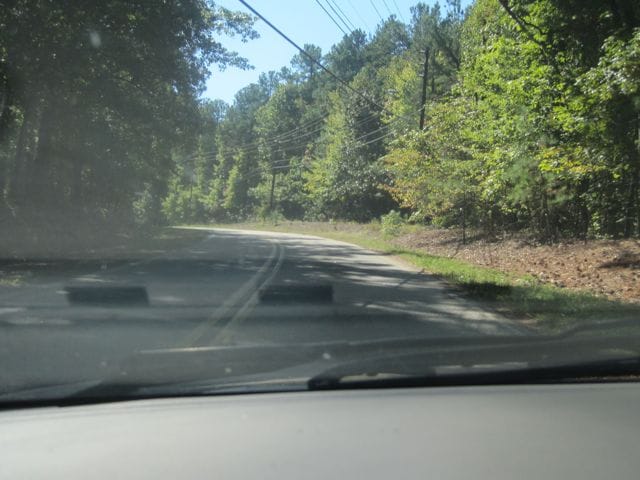Blurring the Landscape
Our intimacy with a place is proportional to the speed we move through it.
That’s the feeling I get when I run sometimes.
There’s a stretch of road near where I live called Lake Dam Road, a long shady hill that sees little traffic. It’s a connector; at the other end of Lake Dam I can turn left or right onto a large throughfare, and run on flat sidewalk for pretty much as far as I want to go.
When I drive down Lake Dam, it seems like a nice quiet neighborhood road. Traffic is easy and light. The trees are tall. And the grass on the side of the road is healthy and clean.

Except it isn’t. But I didn’t really appreciate that until I started running it. I’d go out expecting that my run would be as picturesque and comforting as any drive down Lake Dam. Then I’d see a piece of trash. No worries, I thought, things fall off garbage trucks sometimes. But then I’d see another piece of trash. Then another, then more and more. These manmade pockmarks on the landscape were largely hidden from anyone sitting inside a moving vehicle, paying attention to whatever is up ahead. But on foot, where I am not just moving through the land but working with it, an intimate part of it, the garbage hangs on tree branches and grass tufts right in front of my eyes. It’s as if nature was stretching out her hands, trying to foist the trash back onto me.
One afternoon, I walked down Lake Dam to see how long it would take me to fill up a garbage bag with litter. I didn’t make it a quarter mile.

Here you can see everything I picked up, laid out to completely cover a seven foot by three foot rectangular patch of ground. In two tenths of a mile, on one stretch of neighborhood road, I had collected twenty-one square feet of human garbage.
Included here are an entire large pizza box, a quart-sized pickle jar, full of pickle juice, several Starbucks cups, a toilet paper tube, many alcohol containers, and a cigarette pack that appears to have been purchased in the Middle East.
When I’m driving down the road, it’s easy to lose sight of what I’m passing. It’s not just litter either. It’s other environmental concerns too. It’s architecture, civic planning, poverty, homelessness. How much can you care about a place that you only recognize at 60 miles per hour?
In his excellent TED Talk from 2007, James Howard Kunstler lamented the disappearance of “places worth caring about.” He was referring to the architecture that pervaded suburbia; the dank grey buildings and foreboding public areas that discouraged their own usefulness. Kunstler’s philosophy was, and is, anchored in large part on aesthetics. Beautiful is good, ugly is bad. His very first sentence in the presentation tips off his hand: “The immersive ugliness of our everyday environments in America is entropy made visible.”
But what of the entropy that remains hidden from view?
Our intimacy with a place is proportional to the speed we move through it. The details are what make our community what it is. And it is the details that get lost in big-picture stuff. I can’t avoid driving through my community. But I can try to be more aware of the barriers I am putting between myself and my world when I close that car door.